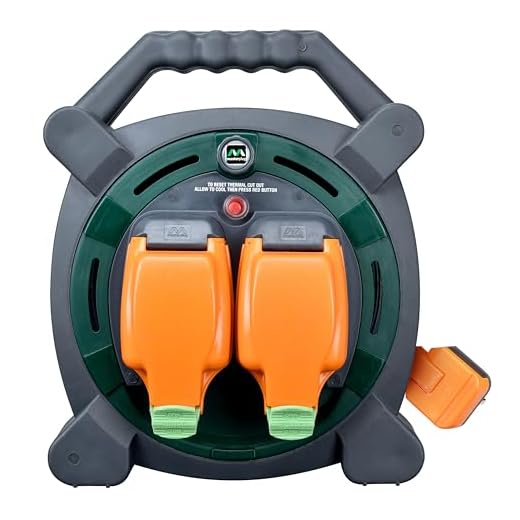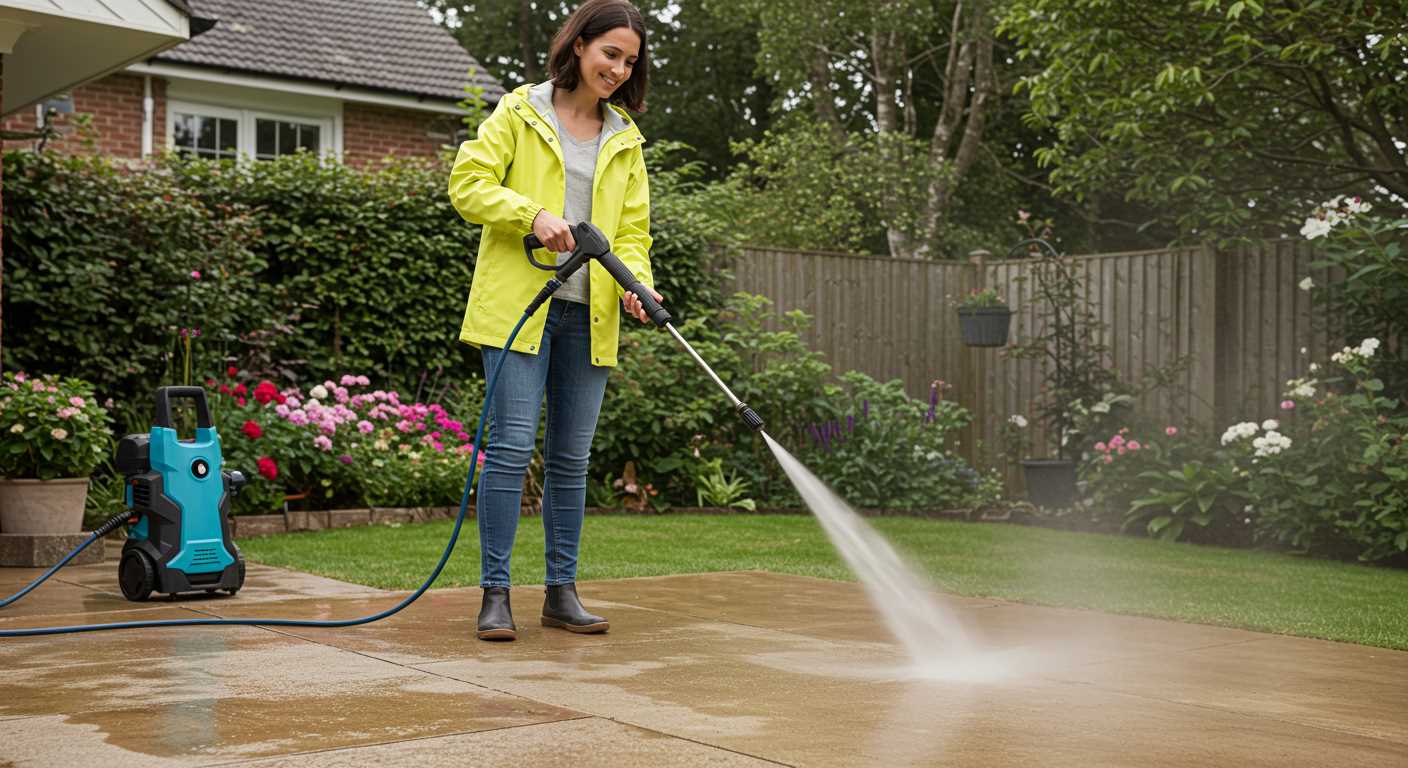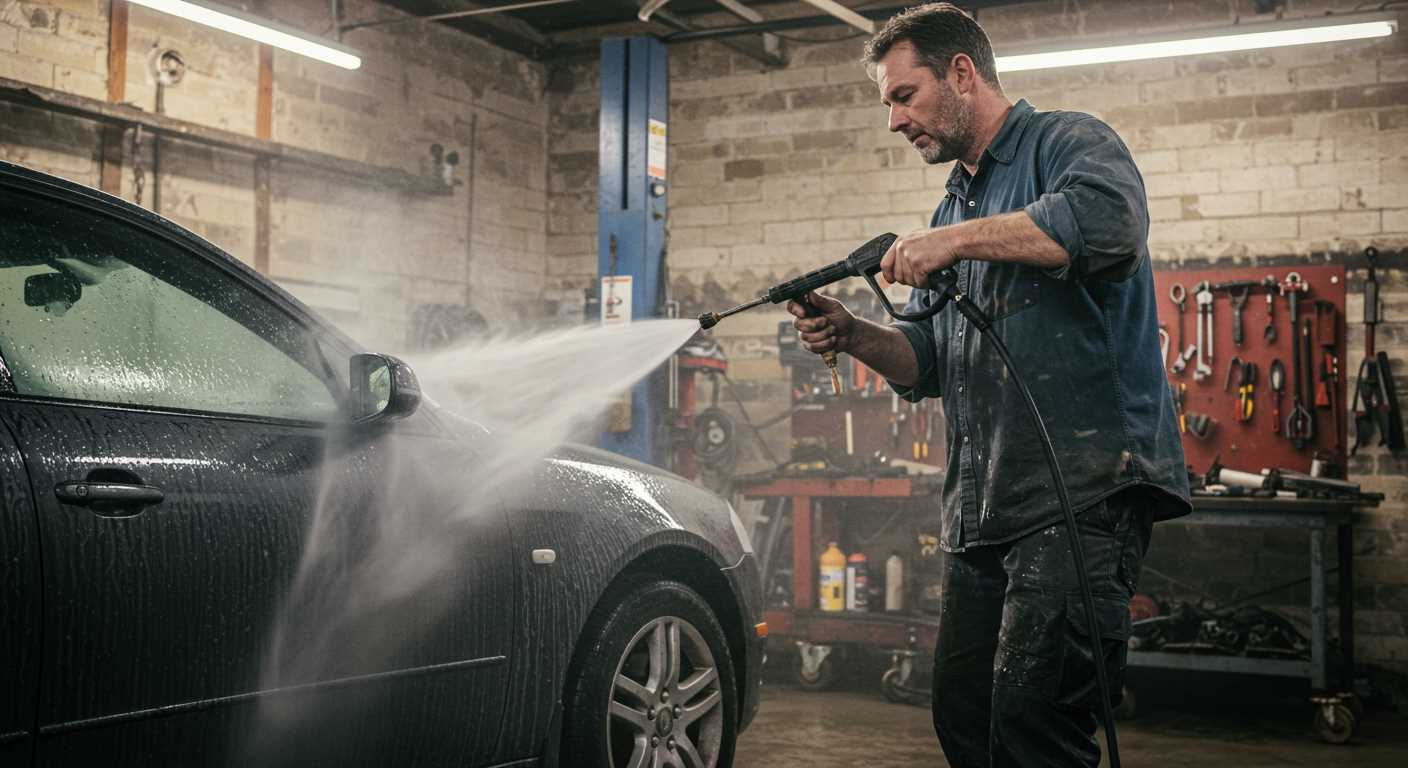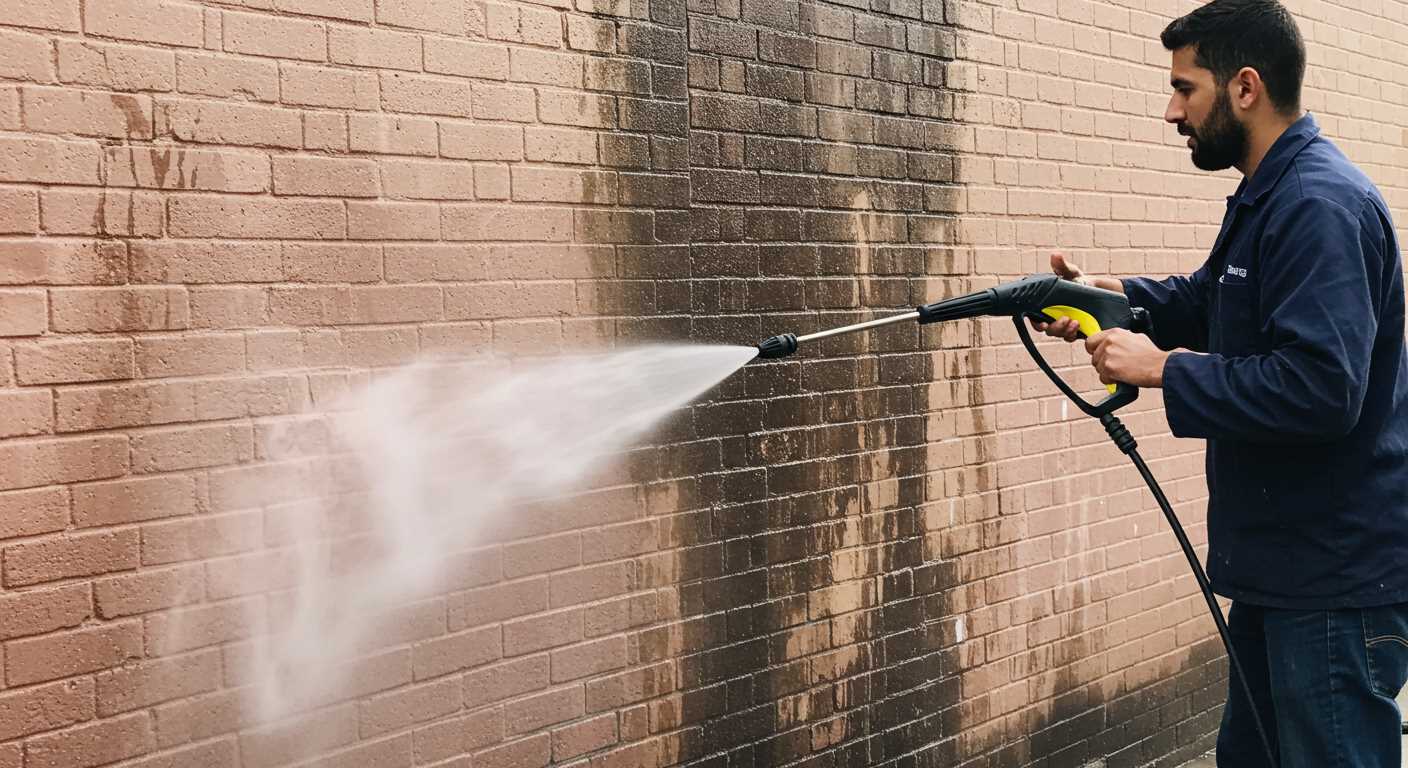

One effective way to maintain the wand activation on your equipment is to use a zip tie or a rubber band. Secure the handle in the desired position, enabling a continuous flow of water for your cleaning tasks. This simple technique provides convenience, especially during extended cleaning sessions.
Alternatively, consider investing in a locking mechanism specifically designed for this purpose. Many manufacturers offer attachments that can hold the wand in place, alleviating the need for manual pressure. These accessories not only enhance user experience but also ensure consistent operation during lengthy jobs.
Additionally, regular maintenance of your equipment contributes to smoother functioning. Inspect the nozzle and hoses for any clogs or leaks that may hinder performance. A clean system operates more efficiently, allowing you to focus on the task at hand rather than on maintaining pressure manually.
Implementing these methods will improve your efficiency and make cleaning large areas less taxing, ensuring you get the most out of your investment in cleaning equipment.
Methods for Maintaining Continuous Operation of Your Equipment
Utilising a rubber band or a similar device to secure the handle can be a straightforward solution. Simply wrap it around the handle and the body of the unit, allowing for a constant flow of water during use.
Alternative Techniques

A secondary method involves using a small piece of wood or a block to prop the handle in place. Find a suitable piece that fits snugly between the handle and the body, ensuring it holds firmly against the trigger mechanism. This requires a bit of creativity and might need you to experiment to find the right size.
Considerations for Safety
Always be cautious when employing these methods to avoid accidental activation. Keep in mind that when the device is running constantly, it may lead to overheating or other issues if not monitored regularly. Ensure that the nozzle is pointed away from yourself and any surrounding objects when using this technique.
| Method | Pros | Cons |
|---|---|---|
| Rubber Band | Easy to implement, reusable | May slip if not secured properly |
| Wood Block | Sturdy, adjustable | Can be cumbersome, requires finding the right size |
The effectiveness of these options ultimately depends on your specific equipment and personal preference. Always ensure that any modification does not compromise the safety or integrity of the device.
Understanding Pressure Washer Mechanisms
Familiarity with the components of high-pressure cleaning units is vital. Most units employ a motor that drives a pump, which generates water under pressure. Two predominant types of pumps are axial and triplex, each offering unique advantages in efficiency and durability.
Components Breakdown

Key elements include the pump, nozzle, and hose. The pump plays a central role in pressure generation, while the nozzle determines water flow and spray pattern. Nozzles vary in size and type; using the correct one can enhance cleaning effectiveness. The hose must withstand high pressure, so opting for reinforced options can prevent leaks.
Benefits of Understanding Mechanisms
Recognising how these components work together allows for optimal usage, resulting in effective cleaning and prolonging equipment lifespan. Maintenance tips include regularly inspecting hoses and nozzles for wear and performing scheduled servicing on the motor and pump. This knowledge contributes significantly to enhancing performance and ensuring reliability during operation.
Identifying Suitable Equipment Models
Opt for models with a built-in lock mechanism or continuous operation feature. Brands like Karcher and Ryobi offer units designed specifically for prolonged use, ensuring comfort and ease during operations. Look for electric types, as they typically provide lightweight options with enhanced manoeuvrability.
Key Features to Consider
Examine the construction quality, especially the housing and components. Durable materials contribute to longevity under frequent use. Assess the length of the hose and cable, as extended reach can enhance usability, particularly for large areas or challenging spots. Pay attention to the adjustable lance; having the ability to modify the spray pattern can optimise cleaning efficiency.
Compatibility with Accessories
Check for compatibility with various attachments such as surface cleaners or extension wands. This versatility allows for more tailored cleaning solutions. A model that supports quick-connect fittings can streamline the switching process between tools, enhancing productivity significantly. Additionally, consider the pressure settings; adjustable settings can cater to different surfaces, from delicate materials to tougher grime.
Using a Trigger Lock for Continuous Water Flow
Implementing a trigger lock can significantly enhance your cleaning experience. This feature allows the user to maintain a steady flow of water, ensuring efficiency during prolonged tasks. Look for models equipped with an adjustable lock mechanism, as they provide flexibility in pressure adjustments while securing the trigger in position.
When selecting equipment, opt for those with a simple release mechanism that can be easily operated with a single hand. This ensures that you can switch between operations without interruptions. For optimal results, make sure to test the lock mechanism before starting your work to confirm it functions smoothly under various conditions.
In practice, I find that using a trigger lock not only allows for effortless cleaning but also reduces hand fatigue during long sessions. It’s particularly beneficial for large surfaces, such as driveways or decks, where consistent coverage is required. Furthermore, a secure lock minimizes the risk of accidental operation, enhancing safety during use.
Pay attention to the compatibility of the lock with different nozzles and attachments. Some models may not perform optimally with specific accessories, which could impact water flow or pressure. Always follow manufacturer guidelines for lock usage to maintain equipment efficiency and longevity.
Incorporating a trigger lock into your cleaning routine can transform the way you handle tough jobs, providing a practical solution for constant water release while allowing you to focus on your work.
Improvising with Household Materials
Utilising a simple piece of rope or strong twine can provide a practical solution. By wrapping the rope around the handle and securing it to a stable point on the machine or nearby structure, continuous flow is achieved with minimal effort. Ensure the knot is secure yet easy to release when needed.
Using Cloth for Padding

A soft cloth can be wrapped around the handle area, creating a grip that allows for securing the handle in position. By placing an object, such as a small block of wood, against the cloth, it acts as a brace to hold the mechanism in place while still being easy to disengage.
Bottles as Weights
An empty plastic bottle, filled with water or sand, can serve as a weight to keep the handle engaged. Attach the bottle to the handle with tape or string, ensuring it pulls down gently. This method allows for stability while avoiding any pressure on the grip mechanism.
Safety Precautions When Using High-Pressure Cleaning Devices
Always wear safety goggles to protect your eyes from debris or water spray. A face shield may provide additional protection in certain situations.
Invest in a robust pair of gloves to shield your hands from chemical exposure and to prevent injuries from the recoil of the equipment.
- Ensure a secure grip on the device at all times to maintain control during operation.
- Keep water output away from electrical outlets or equipment to avoid electrical hazards.
- Be cautious of slippery surfaces that may arise from water spray; consider using non-slip footwear.
Inspect the hose and fittings before each use. Look for signs of wear, such as cracks or leaks, to prevent accidents during operation.
Always direct the spray nozzle away from yourself and others, avoiding any body parts or fragile objects in the vicinity.
- Use only approved detergents designed for high-pressure applications to minimise risks.
- Follow the manufacturer’s instructions for maintaining and using the machine to ensure safe operation.
Never bypass any safety locks or mechanisms designed to prevent accidental activation. These features are critical for safe use.
Inform others in the area before you start using the machine, ensuring they keep a safe distance to avoid injury.
Finally, always disconnect the power supply and water source after use to prevent any unintentional activation while cleaning or storing the device.
Maintenance Tips for Longevity and Reliability
Regular inspection of hoses and connections ensures no leaks or wear. Replace any damaged parts immediately to prevent further issues.
After each usage, thoroughly rinse the nozzle and hose to remove debris and prevent clogs. This will enhance water flow and reduce pressure loss over time.
Store the equipment in a dry and temperature-controlled space to prevent corrosion. Avoid leaving it exposed to harsh weather conditions which can deteriorate materials.
Use a quality anti-freeze solution in colder months to protect internal components. This simple step can save you from extensive repairs during spring.
Check for proper lubrication as per the manufacturer’s guidelines. Regular maintenance of moving parts can prevent wear and prolong the machine’s life.
Invest in a quality cover to shield the unit from dust and moisture when not in use. A simple protective layer can significantly extend the lifespan of your equipment.
Perform periodic professional servicing to ensure all mechanical aspects are in good shape. Expert assessments can catch issues early and prolong the operational efficiency.
Keep the system clean. Build-up can hinder performance and lead to malfunctions. Regular cleaning minimizes frustrations during your next session.
Common Issues and Troubleshooting Solutions
Check for leaks in hoses and connections, as they can significantly affect performance. Inspect all fittings tightly, replacing any worn or cracked parts. A faulty O-ring in the gun or hose connection might cause a lack of water flow, requiring a simple replacement to restore functionality.
When experiencing inconsistent water pressure, ensure that the nozzle is clean. Clogged nozzles impede flow, leading to reduced output. A thorough cleaning or replacing the nozzle can often resolve this problem.
- Examine the water source; low supply pressure can hinder acceptable functioning. Ensure the water supply is adequate.
- Look out for potential blockage in the intake filter, which may require cleaning to ensure proper water intake.
- If the unit won’t start, check for a blown fuse or tripped circuit breaker in your electrical supply.
Electrical and Mechanical Issues

Inspect the trigger assembly for faults if there are issues with activation. A sticking or malfunctioning trigger can prevent proper operation. For gas models, ensure the fuel line is clear and the ignition system is functioning. Any discrepancies in engine performance would generally require a visit to a service centre.
Heating problems can arise; remember that excessively hot water can damage internal parts. A thermostat fault can cause overheating–regular checks will prevent stresses on components.
Troubleshooting Tips
- Regularly clean and inspect all components for wear and tear.
- Use the manufacturer’s recommendations for seasonal maintenance.
- Keep a close eye on operational sounds; unusual noises can be indicative of deeper issues needing immediate attention.
Document any adjustments or repairs you perform, as this record can be invaluable for tracking the equipment’s history and anticipating future maintenance needs.








